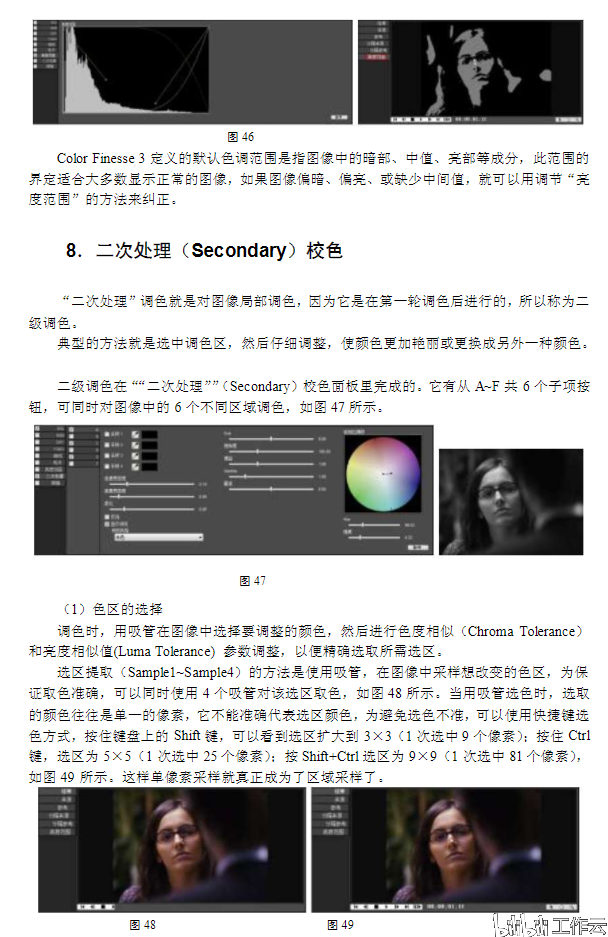
- #Color finesse 3 premiere pro how to#
- #Color finesse 3 premiere pro full#
- #Color finesse 3 premiere pro pro#
- #Color finesse 3 premiere pro professional#
In color correction, tonal correction generally comes first: black levels first, then white levels. If the Divide mode solid method isn't for you, it may or may not take only a few more clicks with the more established methods offered by Adobe. There isn't a one-click solution for white balance by Adobe, but a simple tool had been offered by Francois Tarlier, ft-Auto White Balance, which wasn't upgraded past CS6.
#Color finesse 3 premiere pro how to#
You can dig deeper on the newer modes with Ben Rollason ( AE scripts), who showed how to emulate these modes before they appeared in After Effects in Subtract and Divide Blending Modes in AE CS4.

#Color finesse 3 premiere pro pro#
There's older similar pieces on PVC, Blend Modes in Adobe Premiere Pro and CMG Hidden Gems: Chapter 9 – Blending Modes, but the movies on modes really do explain the composite modes and blending mode groups well. The same class has more great explanations of using solids and gradients for tinting, as well as a Modes explained module. You can find details of the relatively obscure Divide mode method in Free Video: Quick & Easy White Balance Adjustment, which is from the class Premiere Pro and After Effects: Enhancing Production Value with Chris Meyer. Eran Stern also recently added a method, using CC Color Neutralizer in Premiere.
#Color finesse 3 premiere pro professional#
Thanks for the ideas, but in a tight turnaround professional workflow (which is every day for me) these kind of workaround solutions mean we lose customers because we can't meet deadlines.There are a number of ways to white balance footage in After Effects and Premiere Pro, and Chris and Trish Meyer recently added another method, sampling with the Tint effect on a Solid layer set to Divide mode above the source layer. Having to do a workaround for this is ridiculous and inefficient.ĭynamic linking breaks the round trip process for grading in Resolve too! Avid can do it, DaVinci Resolve can do it, FCPX does not clip the levels when it gets it wrong. Adobe just need to add a setting in the "Interpret Footage" panel to force levels to be read appropriately when the source material can't be identified by Premiere correctly. Some jobs do not have the time to round trip to Resolve so we need to grade in Premiere. Many jobs arrive for grading as Premiere projects and the editor has not been able to adjust levels on import. I don't have the time to mess around when my turnaround time is less than 12 hours. That workflow is no good when I have a show with over 800 clips in it. With 4K footage, I pretty much have to resort to proxies anyway, so the AE detour is not much more of a hassle." That eliminates the intermediate render, but doesn't play back in real time in Premiere.

With timelines you create this way, you can drag other full-range videos into the timeline without clipping the highlights to 100 "Most reliable approach with Adobe SW is to preprocess mixed-range clips through After Effects, and dynamic link the AE composition to your Premiere sequence. Right-click on the video and select the New Sequence from Clip command.
#Color finesse 3 premiere pro full#
Basically, to preserve superwhites in a full range video file, don't drag it into a pre-existing timeline.

Here's a link to an article which explains the details. However, you have to take care to use a full-range-compatible video effect to grade the highlights down below 100 IRE rather than clip them off. When all goes well, it will preserve superwhites (100-109 IRE) in full-range video files while working with them in its studio swing (0-100 IRE) timeline. It tries to finesse the discrepancies between full range 0-255 and studio swing 16-235 video files behind the scenes. Premiere does not have an option to force the clips to be seen as video levels. Premiere effects tools all process AFTER the clipping has taken place.


 0 kommentar(er)
0 kommentar(er)
